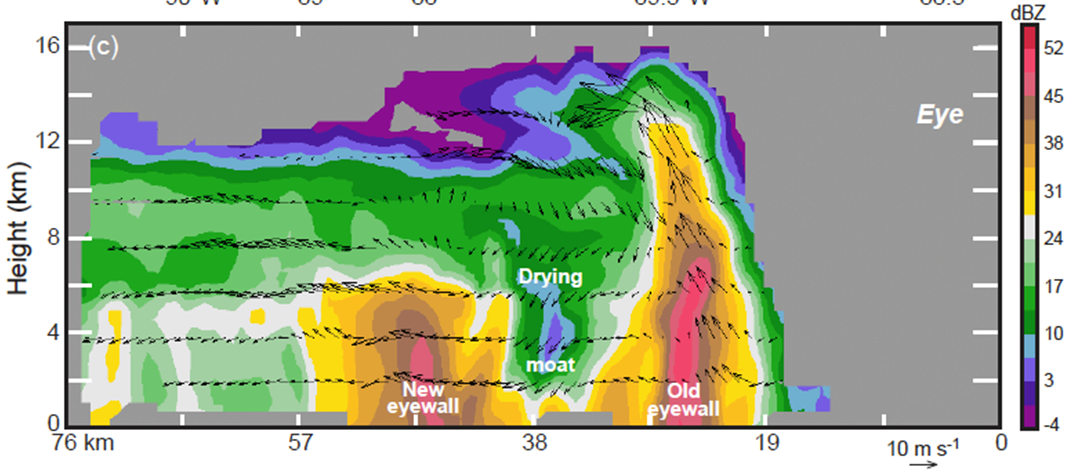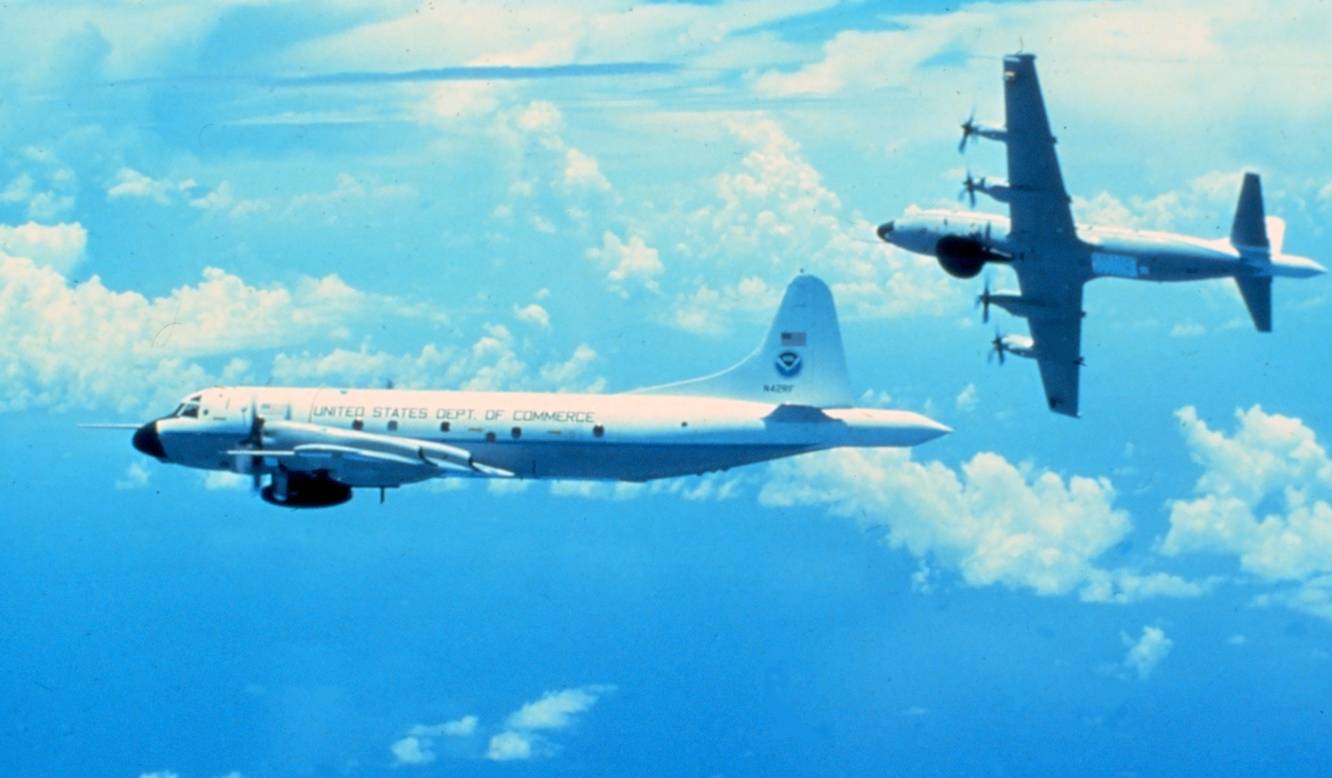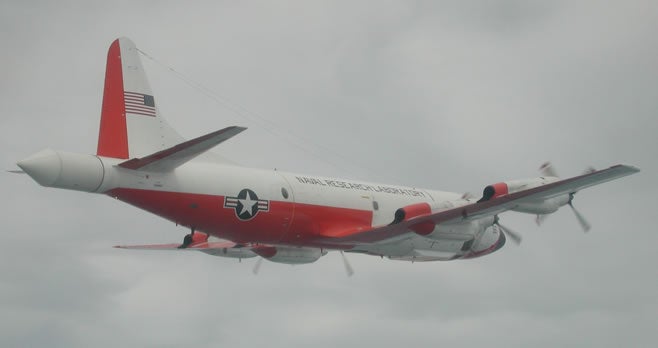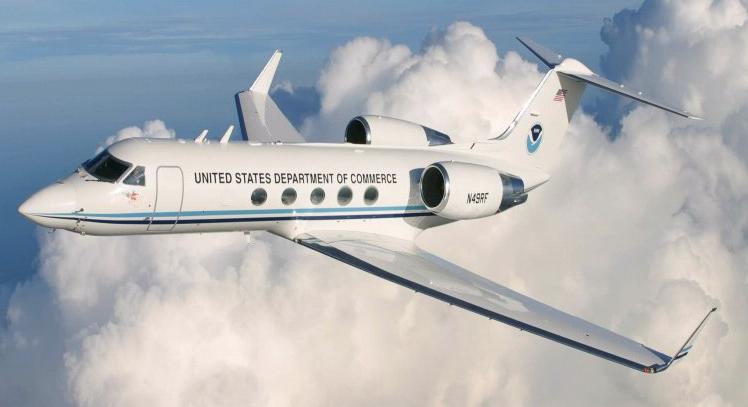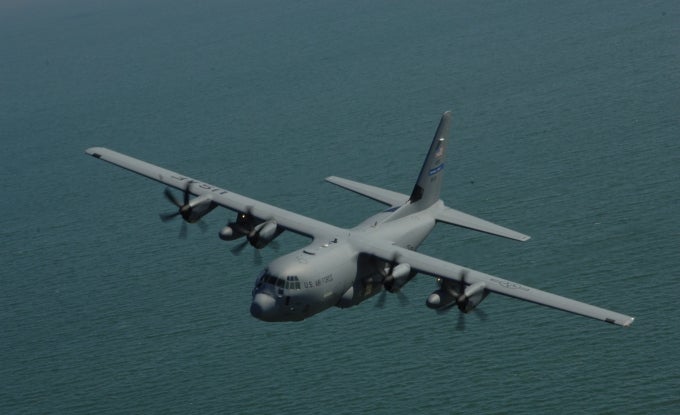RAINEX
Hurricane Rainband and Intensity Change Experiment
The Hurricane Rainband and Intensity Experiment (RAINEX) was an aircraft investigation of hurricane intensity changes associated with eyewall-rainband interactions.
RAINEX took place from 15 August to 30 September 2005 over the Western Atlantic Ocean and Gulf of Mexico. The RAINEX Operations Center was located at the University of Miami campus. Three tropical systems were investigated during RAINEX each with multiple days of observations (Hurricanes Katrina, Ophelia, and Rita).
(Click Image for Full Resolution)
Scientific Objectives
The objectives of RAINEX were to document hurricane rainband and inner-core structures to gain insight into how they interact and, ultimately, affect hurricane intensity changes. Despite many years of hurricane studies, there was a general dearth of observations indicating how hurricane rainbands interacted with the storms inner core, and hence intensity changes. RAINEX addressed this problem by bringing three airborne Doppler radars to bear which allowed for simultaneous quadruple Doppler coverage of the principal rainbands and continuous monitoring of the eyewall dynamics. With these aircraft RAINEX was looking to:
- Document rainband and inner-core structures simultaneously by intensive multiple aircraft dual-Doppler radar.
- Describe the environments of the rainbands by using GPS dropsonde data. These data provided the thermodynamic framework for the dual-Doppler radar observations of rainband and eyewall structure and dynamics.
- Use a high-resolution, non-hydrostatic, and full physics numerical model (the UM/RSMS coupled atmosphere-wave-ocean, vortex-following MM5) to investigate the interaction of rainbands and the inner-core region and the impact of this interaction on overall hurricane structure and evolution - particularly intensity changes. The aircraft Doppler radar and dropsonde observations were used to constraints on what model output could or could not be considered realistic.
Instrumentation
RAINEX utilized five aircraft to accomplish the goals of the project. The three P-3 aircraft were directed by RAINEX, while the other two aircraft were providing operational support.
The NOAA N42 and N43 WP-3D were supported and deployed by the NOAA Aircraft Operations Center in Tampa, FL and were equipped with a lower fuselage radar, a tail Doppler radar, GPS dropsondes, Stepped Frequency Microwave Radiometer (SFMR), Airborne Expendable Bathythermographs (AXBT's) and a variety of cloud physics, radiation and other instrumentation. N43 participated on 11 days and N42 on 4 days.
(Click Image for Full Resolution)
The Naval Research Laboratory (NRL) P-3 was also deployed out of Tampa, FL and was equpped with the ELDORA Doppler Radar, GPS dropsondes, and selective state parameters. The NRL P-3 participated on 10 days.
(Click Image for Full Resolution)
The NOAA Gulfstream-IV was operated by NOAA AOC out of Tampa, FL and was used primarily for dropsonde deployment in the vicinity of hurricanes.
(Click Image for Full Resolution)
The US Air Force Reserve C-130 was the primary tool used by the National Hurricane Center to investigate and document conditions in developing and mature hurricanes. There were several C-130 aircraft that were deployed for this purpose from the 53rd Weather Reconnaissance Squadron at Keesler Air Force Base, MS. They were equipped with dropsonde and state parameter systems.
(Click Image for Full Resolution)
Further information on RAINEX is available in the overview article published in the Bulletin of the American Meteorological Society.
|
The eye of Hurricane Katrina from the NOAA P-3.
|
ELDORA radar view of the eyewall structure of Hurricane Rita. (Courtesy Brad Smull)
|
SMART Balloons used during RAINEX. (Courtesy NOAA)
|
IFEX Logo. (Courtesy NOAA)
|
RAINEX PI Shuyi Chen in the RAINEX Ops Center.
|
All photos copyright University Corporation for Atmospheric Research unless otherwise noted.
Principal Investigators:
- Wen-Chau Lee NCAR/EOL
- Robert Houze UW
- Shuyi Chen UM
Data Manager:
- Bob Rilling NCAR/EOL/RSF
- EOL Archive, NCAR/EOL/DMS
